1900–1914: Optimism and the Gold Standard
When the year 1900 arrived, the world stood at the edge of a new era. The atmosphere was optimistic. Science and society were advancing, and the future looked bright. The Second Industrial Revolution was in full swing — electricity lit up cities, the telegraph and telephone connected continents, and the first automobiles hinted at a new kind of mobility. Anything seemed possible.
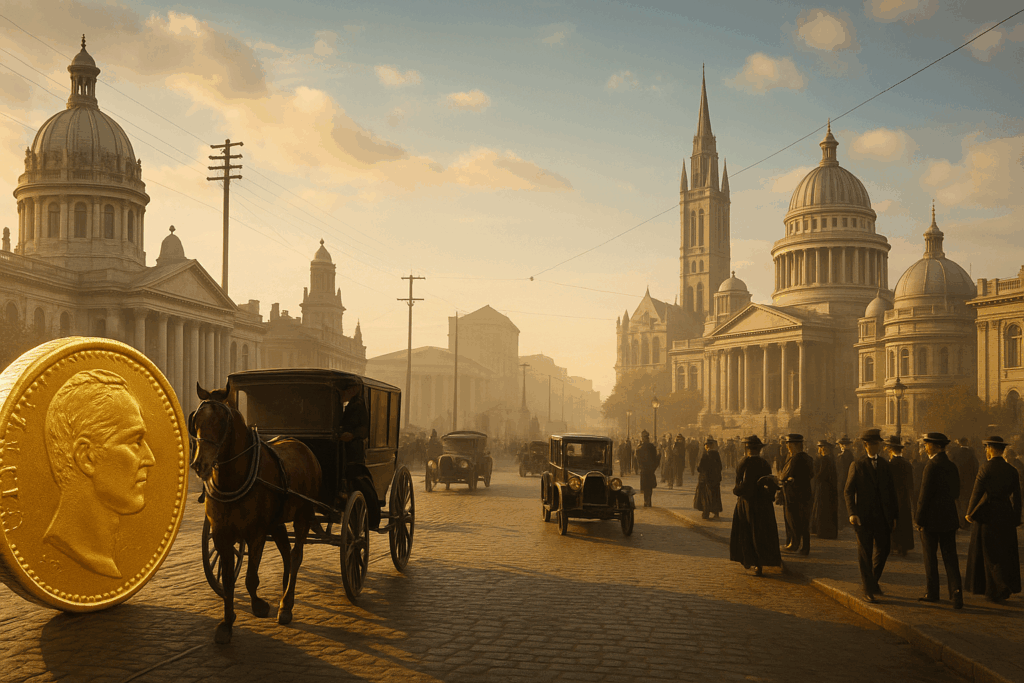
In the United States, the recent Spanish-American War (1898) had elevated the still young nation to global significance. The “American Dream” was alive and well — a belief that anyone could find prosperity through effort and ambition. The country was expanding rapidly, both economically and territorially, and the spirit of progress was palpable.
Europe, by contrast, was more complex. On the surface, it was an age of elegance: art, literature, architecture, and music flourished in what became known as the Belle Époque. But beneath this golden facade, four major powers — Great Britain, France, Germany, and Austria-Hungary — were locked in a quiet but growing rivalry. Nationalism, militarization, and colonial ambition quietly shaped a volatile political undercurrent.
In Russia, the empire of Czar Nicholas II projected the image of grandeur — yet beneath it lay rigid autocracy and widespread poverty. While industrialization was gaining momentum in regions like St. Petersburg, Moscow, and the Donbass, the vast majority of the population remained rural and could barely sustain a living. Still, Russia was experiencing a cultural renaissance: names like Tolstoy, Chekhov, and Rachmaninoff echoed across the world, marking a high point of Russian intellectual and artistic achievement.
By the early 20th century, the leading powers of the world had anchored their currencies to gold, signaling an era of stability — at least on the surface. But beneath that gold-backed facade, the financial foundations of some were beginning to show cracks.
In Great Britain, the Pound Sterling had been tied to the Gold Standard for nearly a century. London had become the financial capital of the world, and countless international contracts were settled in Pounds.
The country’s finances were solid: public debt was relatively low, around 30% of GDP, and the colonial empire ensured a steady influx of wealth. But challenges loomed. Massive investments were made into modernizing the Royal Navy, driven by a growing naval rivalry with Germany. At the same time, Britain’s traditional economic dominance was increasingly challenged by the industrial rise of Germany and the United States.
As for France, the Franc was also on the Gold Standard, adopted officially in 1873 through the Latin Monetary Union. Since the end of the Franco-Prussian War (1870–71), France’s financial position had gradually improved. The country had a high domestic savings rate, and large sums of capital were invested abroad — especially in Russia.
However, France faced difficulties in its colonial territories: uprisings in Algeria and Indochina required costly military interventions. Moreover, industrial development lagged behind that of Britain and Germany.
Germany stood at the height of its industrial transformation. The Goldmark, introduced after unification, was tied to gold (1 Mark = 0.358 grams of gold).
Massive investments in infrastructure and military expansion, including railroads and a growing navy, pushed the economy forward. But the financial margins were thin: military spending, social security obligations, and an expanding public administration placed heavy burdens on the imperial budget.
Though the economy was booming, the Reich’s financial structure was fragile — dependent on contributions from the individual German states and a tax system struggling to keep pace.
By contrast, the United States was thriving. The Gold Standard Act of 1900 formally tied the US Dollar to gold (1 Dollar = 1.5046 grams of gold).
Public debt was minimal, below 10?% of GDP. The nation experienced unprecedented industrial and territorial growth, and its financial system matured rapidly.
Although the US largely pursued an isolationist foreign policy, its economic and military strength was rising fast. A key milestone was the Federal Reserve Act of 1913, which established the Federal Reserve System — a new central banking structure aimed at stabilizing the national economy and managing monetary policy.
1914–1920: War and Monetary Disruption
So by 1914, the great powers of the world stood on firm monetary ground — at least on paper. Their currencies were gold-backed, their economies humming, and their ambitions global. Yet beneath this polished surface lay mounting tensions: arms races, colonial rivalries, nationalist undercurrents, and a fragile web of alliances.
And then — a single bullet in Sarajevo set the entire system ablaze.
When World War I erupted in 1914, the monetary order of the 19th century collapsed almost overnight. One after another, nations suspended the gold standard, abandoning convertibility to fund the largest military conflict the world had ever seen. The discipline of gold-backed currency gave way to political necessity — and to the printing press.
To finance the war, governments issued unprecedented amounts of debt and flooded their economies with paper money. Inflation followed quickly, and in some countries, prices doubled or tripled within just a few years. Wartime economies were redirected toward total mobilization, with little regard for fiscal sustainability.
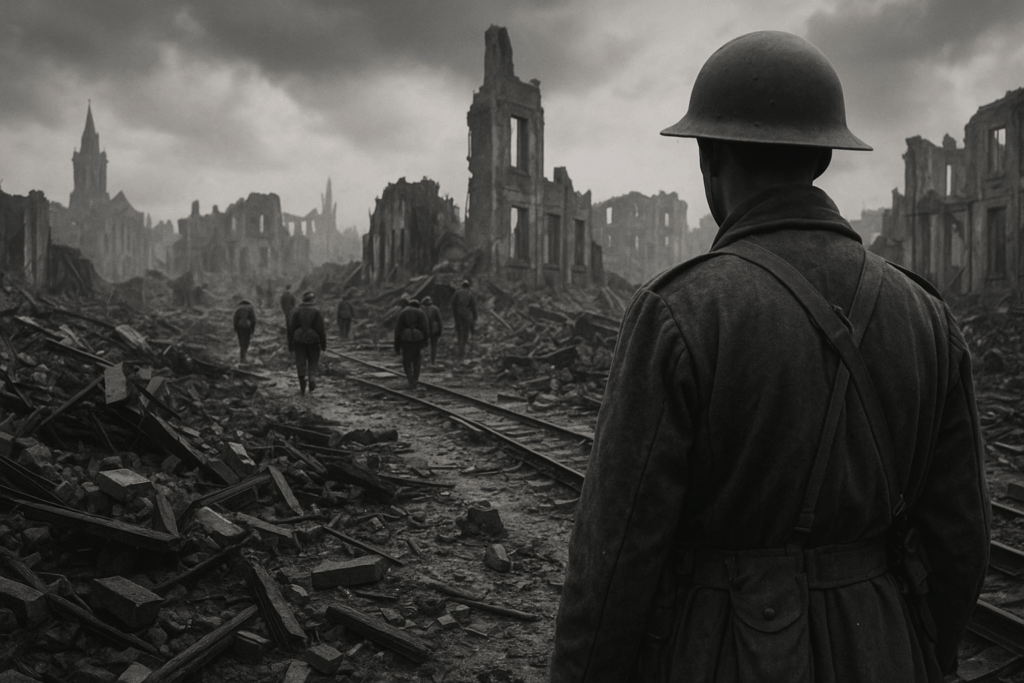
After the war ended in 1918, Europe lay shattered — physically, economically, and financially. National debts had exploded, currencies had lost their anchors, and entire regions faced food shortages, unemployment, and social unrest. Reparations, especially those imposed on Germany, added further strain to already fragile systems.
Only the United States, which had joined the war late and emerged with its infrastructure intact, retained a relatively stable economy and a currency still linked to gold. By 1920, the US had become the world’s largest creditor, while Europe struggled with inflation, reconstruction, and a shattered financial order.
The war had not only redrawn borders — it had rewritten the rules of money. What came next would test every remaining assumption about stability, value, and trust in currency.
1920–1939: Inflation, Illusion, and Collapse
The early 1920s began with chaos. Across much of Europe, the financial aftermath of World War I was impossible to ignore: currencies had been debased, economies strained, and trust in money severely weakened. In Germany, hyperinflation reached historic extremes — by 1923, the Mark had become effectively worthless. Bread prices doubled by the day, and workers were paid twice daily to spend their wages before they lost value.
Other countries, too, faced inflation, though less dramatic. There were attempts to restore monetary order, often through deflationary policies or currency reforms. Several nations — including the UK — returned to the gold standard, hoping to recapture prewar stability. But this move often came at the cost of rising unemployment and stagnation, especially when gold pegs were set too high and disconnected from economic reality.

Meanwhile, the United States boomed throughout the 1920s — the so-called Roaring Twenties. The Dollar was strong, credit abundant, and industrial growth rapid. But beneath the surface, speculative bubbles grew. When the US stock market crashed in October 1929, it triggered a worldwide economic downturn — the Great Depression.
Global trade collapsed, banks failed, and unemployment soared. In response, governments abandoned the gold standard (again), turned inward, and began to experiment with monetary intervention and deficit spending. Currencies floated or were pegged arbitrarily. Money became, for the first time in history, fully political.
By the late 1930s, the world economy had not fully recovered. Fascist regimes in Germany and Italy pushed military expansion to escape economic stagnation, while democratic nations experimented with cautious recovery. In all cases, money was no longer anchored in gold, but in government control and national priorities.
The monetary era of the 19th century was over. What replaced it was more flexible, but also more volatile — and the consequences would soon be felt in the next great conflict.
1939–1945: Total War and the Suspension of Monetary Rules
When World War II began in 1939, the global economy was still reeling from the Great Depression. Currencies were unanchored, trade had fragmented, and trust in financial systems was fragile. Yet none of that mattered for long — the war effort took absolute priority, and economic rules gave way to existential necessity.
Every major economy mobilized for total war. Industrial production was redirected toward weapons, vehicles, uniforms, and rations. Civilian consumption was curtailed. Labour markets were transformed. The monetary consequences were profound: fiat money became the primary tool of war finance.
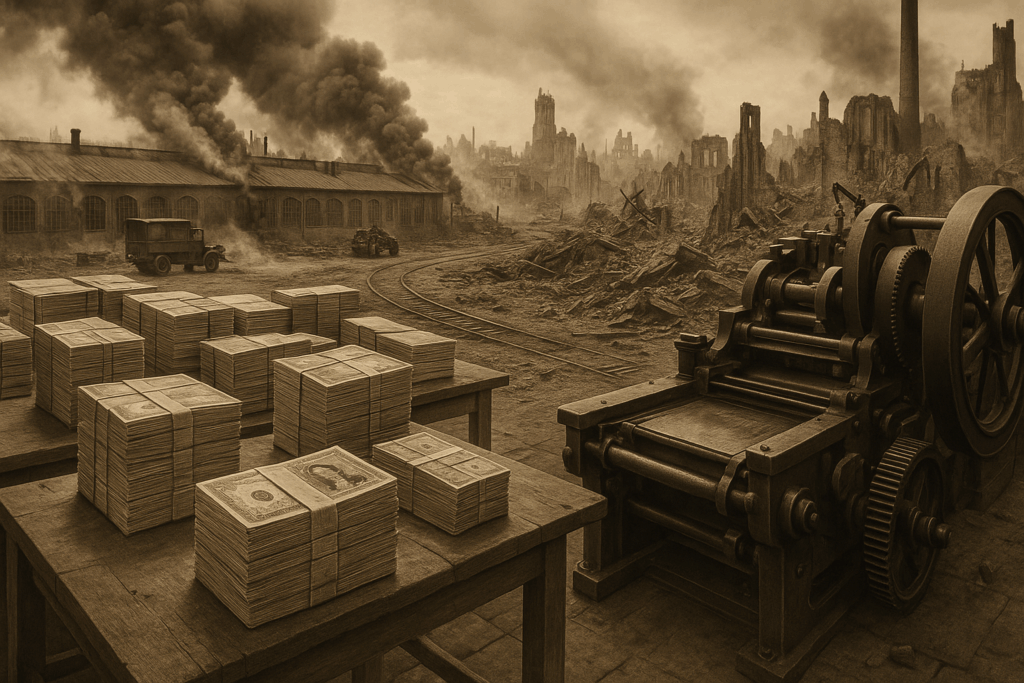
In Nazi Germany, the Reichsbank quietly abandoned all pretense of restraint. Military spending soared, funded through an opaque network of government IOUs, occupied territories, and plundered assets. Inflation was kept artificially in check through price controls and repression — but the system was fundamentally unsustainable.
In Britain, the pound sterling was no longer tied to gold. The Bank of England issued large quantities of money, while strict rationing and capital controls managed domestic demand. The empire’s resources were fully exploited to maintain the war economy. London, once the center of global finance, now functioned as a command center for survival.
In the United States, which entered the war in 1941, the story was different. The dollar remained strong, still linked to gold, and the nation’s industrial base remained untouched by destruction. Washington financed its war through a combination of war bonds, taxes, and moderate monetary expansion, while emerging as the new banker of the free world. The war turned the U.S. into the largest creditor and economic power on the planet.
Elsewhere, economies were obliterated. France, invaded and divided, lost monetary control. The Soviet Union, under Stalin, managed an extraordinary wartime economy through sheer central planning and massive human cost. Japan financed its war through monetary expansion, colonial exploitation, and massive borrowing — setting the stage for postwar collapse.
By the time the war ended in 1945, millions were dead, cities lay in ruins, and the global monetary system — such as it was — had been bent, broken, or bypassed. But one reality had become undeniable:
The old world of gold-pegged currencies was gone. Money had become a political instrument — managed, controlled, and deeply tied to state power.
Out of the ashes, a new order would be built. And this time, the United States would set the terms.
1945–1971: Bretton Woods – Order in a Fractured World
After the devastation of World War II, the world needed more than reconstruction — it needed a new financial architecture. In 1944, even before the war ended, representatives from 44 nations met in Bretton Woods, New Hampshire, and laid the foundation for a new monetary world order.
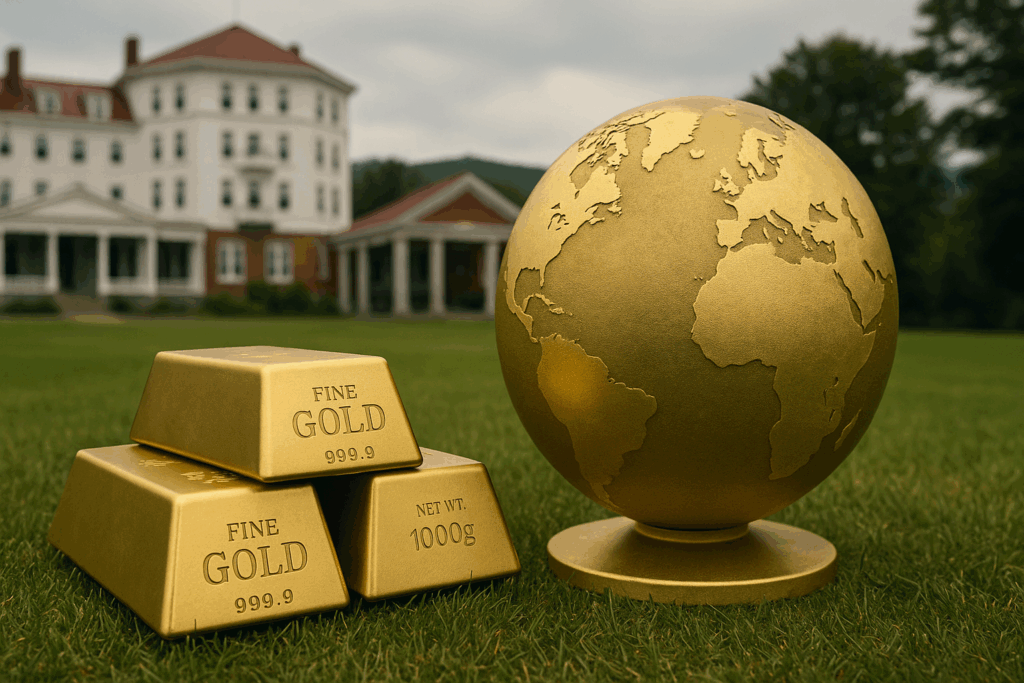
The result was the Bretton Woods system — a framework designed to combine the stability of fixed exchange rates with the flexibility needed for national economic policy. At its core:
- The US Dollar became the central reference currency.
- Other currencies were pegged to the Dollar, and
- The Dollar was convertible into gold at a fixed rate of 35 USD per ounce.
Effectively, the US became the world’s gold proxy, and the Dollar, the new standard for international trade and reserves. Two major institutions were founded:
- The International Monetary Fund (IMF) to support currency stability, and
- The World Bank to aid reconstruction and development.
The early decades of Bretton Woods brought a period of remarkable economic growth, especially in the West. Germany and Japan rose from the rubble into export-driven powerhouses. The US, relatively untouched by war, acted as banker to the world.
But the system had cracks. As the global economy expanded, so did the need for Dollars — but the amount of US gold reserves remained finite. By the late 1960s, the US was facing twin deficits: budget and trade. Dollar inflation grew, and foreign nations — most notably France under de Gaulle — began to redeem their Dollars for gold.
1971–1980: The End of Gold and the Shock of Oil
In 1971, President Richard Nixon closed the gold window — ending the direct convertibility of the US Dollar into gold and dismantling the last pillar of the Bretton Woods system – a decision driven by mounting US deficits, gold outflows, and growing international pressure.
Currencies were no longer backed by gold but became free-floating, with their value determined by markets and central bank policy. It was a historic break from centuries of monetary tradition.
This shift opened the door to monetary expansion. Without the gold constraint, governments could now run deficits and issue currency with far greater freedom. In the short term, the system adjusted — but the real test came just a few years later.
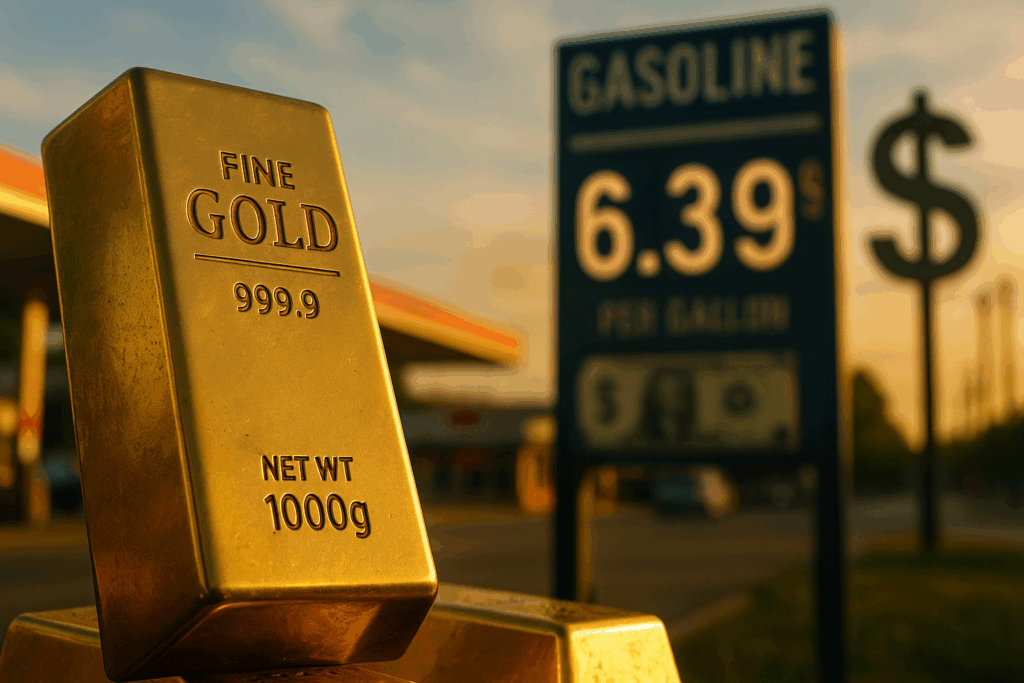
In 1973, the first oil crisis erupted. Triggered by the Yom Kippur War and an OPEC oil embargo targeting the US and its allies, oil prices quadrupled within months. Energy costs soared, fueling a wave of inflation across Western economies.
The result was a rare and toxic combination: high inflation and stagnating growth — known as stagflation. Central banks struggled to respond. Interest rates rose, unemployment surged, and the trust in fiat money eroded in many countries.
By the end of the decade, the world had learned a painful lesson: Without a hard anchor like gold, monetary discipline required political courage — and in its absence, inflation could run wild.
1980–2000: Volcker’s Shock, Bundesbank Discipline, and the Rise of Global Finance
The 1980s began with a crisis of confidence in money. Inflation was rampant, particularly in the United States, where the consumer price index had soared into double digits. The turning point came with Federal Reserve Chairman Paul Volcker, who launched a historic tightening of monetary policy — interest rates peaked above 20% in 1981. Painful, yes, but effective: by mid-decade, inflation was under control, and trust in monetary authority was restored.
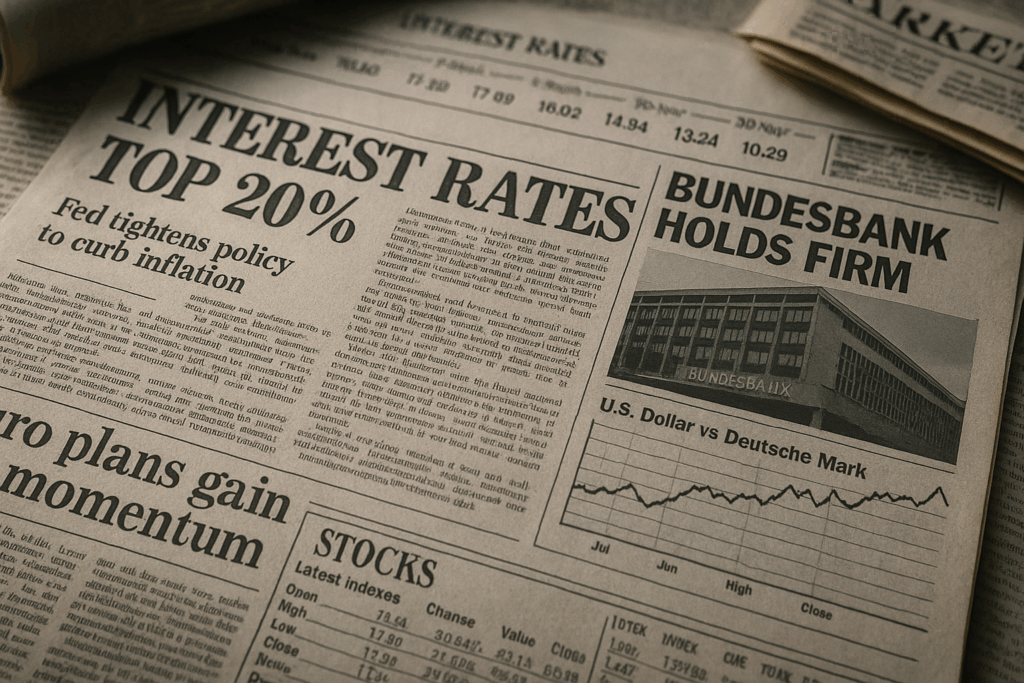
In Germany, inflation control was never surrendered. The Bundesbank had long held a reputation for monetary discipline. Rooted in the trauma of the 1920s hyperinflation, the Bundesbank was granted a high degree of independence — and it delivered. The Deutsche Mark became the anchor of monetary stability in Europe, and in many ways, it was the anti-Dollar: hard, disciplined, conservative. Germany’s monetary policy often stood in contrast to the looser fiscal policies of its neighbors.
In France, the 1980s began with socialist experiments under President François Mitterrand — including nationalizations and expansive public spending. But by 1983, facing inflation and market pressure, France executed a dramatic policy U-turn known as the “tournant de la rigueur”, aligning more closely with German-style stability policies. The French Franc, once volatile, was now increasingly “shadowing” the Deutsche Mark.
In the United Kingdom, Margaret Thatcher‘s government took a different approach. After years of stagflation, the UK embraced monetarist reforms: deregulation, privatization, and tight money. The pound initially suffered under high interest rates and unemployment, but over time, the City of London was revitalized, becoming a hub of global finance once again — especially after the Big Bang deregulation of 1986.
Across continental Europe, preparations were underway for something bigger: the Euro. Beginning with the European Monetary System (EMS) and the Exchange Rate Mechanism (ERM), European currencies were slowly tied together in expectation of a shared future. This monetary convergence was made possible largely by the credibility of the Bundesbank — and its standards would go on to shape the design of the European Central Bank (ECB) itself.
Meanwhile, China was embarking on a transformation of historic scale. After 1978, under Deng Xiaoping, the country began liberalizing its economy. While the Renminbi (Yuan) remained strictly controlled, market reforms and the opening of Special Economic Zones ignited massive growth. By the 1990s, China had become a manufacturing powerhouse — though its currency was not yet internationally significant. China was still largely a Dollar-based trade economy.
At the global level, the US Dollar remained dominant, especially after the fall of the Soviet Union in 1991. The newly liberalized economies of Eastern Europe, Russia, and Latin America often held their reserves in Dollars and used it for trade. The 1997 Asian financial crisis reinforced the Dollar’s supremacy, as investors fled to safety — and that safety was still perceived to be the US.

Pingback: A Monetary Journey through History – Part III | First Light